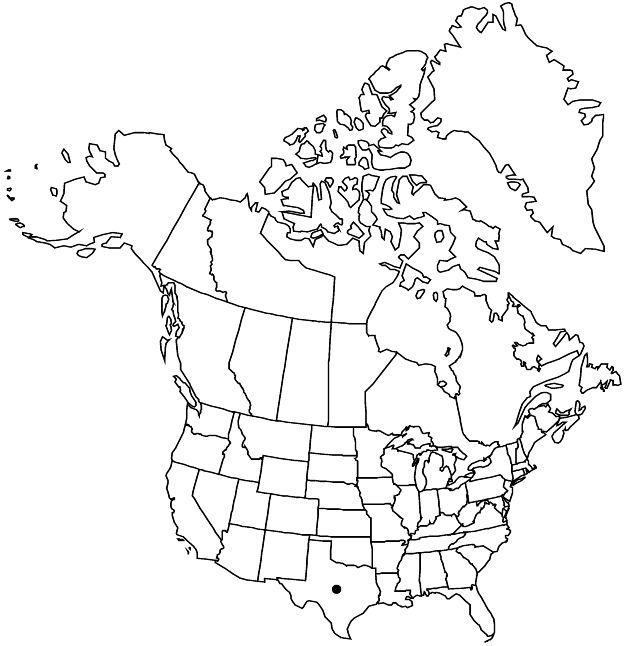Euphorbia roemeriana
Linnaea 22: 151. 1849.
Herbs, annual, with taproot. Stems erect, occasionally decumbent at base, branched, 15–30 cm, glabrous. Leaves: petiole 2–5 mm; blade oblanceolate to obovate, 5–20 × 5–10 mm (larger leaves in distal portion of stem), base cuneate to attenuate, margins entire, apex rounded, surfaces glabrous; venation pinnate. Cyathial arrangement: terminal pleiochasial branches 3, 1–4 times 2-branched; pleiochasial bracts ovate to oblong, similar in size to distal leaves; dichasial bracts connate 1/2 length, reniform to semicircular, base truncate to perfoliate, margins entire, apex rounded to obtuse; axillary cymose branches 0–3. Cyathia: peduncle 0–0.9 mm. Involucre campanulate, 1.5–2 × 1–1.6 mm, glabrous; glands 4, elliptic to trapezoidal, 0.4–0.6 × 0.7–1.2 mm; horns slightly convergent, 0.1–0.3 mm. Staminate flowers 10–12. Pistillate flowers: ovary glabrous; styles 0.6–1 mm, 2-fid. Capsules subglobose, 2–2.5 × 2.4–3 mm, slightly lobed; cocci rounded, smooth, glabrous; columella 1.5–1.8 mm. Seeds brown, oblong-ovoid, 1.6–1.8 × 1.4–1.5 mm, with scattered, deep and broad pits; caruncle conic, reniform, 0.3–0.4 × 0.4–0.6 mm.
Phenology: Flowering and fruiting spring.
Habitat: Rich calcareous soils, creek canyons.
Elevation: 100–300 m.
Discussion
D. S. Correll and M. C. Johnston (1970) suggested that Euphorbia roemeriana, which is restricted to the eastern part of the Edwards Plateau, is the southern counterpart of E. commutata, to which it is morphologically very similar. However, molecular phylogenetic analyses indicate that it is most closely related to E. austrotexana and E. longicruris (J. A. Peirson et al. 2014). Euphorbia roemeriana can be distinguished from E. commutata and several of the other small, annual species of subg. Esula by its consistently connate dichasial bracts.
Selected References
None.
